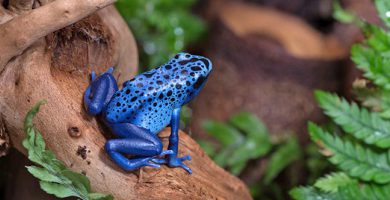Examples Of Anabolism And Catabolism With Definition To Better Underst..
We elaborate the examples of Anabolism and Catabolism. The anabolism and catabolism are two processes chemicals that make metabolism (set of chemical reactions that occur in all living things ). These processes are inverse but complementary, since one depends on the other and together they allow the functioning and development of cells .
Anabolism
Anabolism, also called the constructive phase, is the metabolic process by which a complex substance is formed starting from simpler substances, whether organic or inorganic. This process uses part of the energy released by catabolism to synthesize complex molecules . For example: photosynthesis in autotrophic organisms, the synthesis of lipids or proteins .
Anabolism forms the basis for growth and development of living organisms. It is responsible for maintaining body tissues and storing energy.
It can help you: What is the difference between Anabolism and Catabolism?
Catabolism
Catabolism, also called the destructive phase, is the metabolic process that consists of the decomposition of relatively complex molecules into simpler ones. This includes the breakdown and oxidation of biomolecules that come from food such as carbohydrates , proteins, and lipids. For example: digestion, glycolysis.examples of anabolism and catabolism
Examples of Anabolism And Catabolism
Examples of anabolism
- Photosynthesis. Anabolic process carried out by autotrophic organisms (they do not need other living beings to feed themselves, since they generate their own food). In photosynthesis, inorganic matter is converted into organic matter through the energy provided by sunlight.examples of anabolism and catabolism
- Chemosynthesis. A process that converts one or more carbon and nutrient molecules into organic matter using the oxidation of inorganic compounds. It differs from photosynthesis because it does not use sunlight as a source of energy.
- Calvin cycle. Chemical process that takes place in the chloroplasts of plant cells. In it, carbon dioxide molecules are used to generate a glucose molecule. It is the means that autotrophic organisms have to incorporate inorganic matter.
- Protein synthesis. Chemical process by which proteins that are made up of chains of amino acids are produced. The amino acids are transported by the transfer RNA to the messenger RNA, which is responsible for determining the order in which the amino acids will join to form the chain. This process takes place in ribosomes, organelles present in all cells.examples of anabolism and catabolism
- Gluconeogenesis. Chemical process by which glucose is synthesized from glycosidic precursors that are not carbohydrates.examples of anabolism and catabolism
Examples of catabolism
- Cellular respiration. Chemical process by which certain organic compounds are degraded to become inorganic substances. This released catabolic energy is used to synthesize ATP molecules. There are two types of cellular respiration: aerobic (uses oxygen) and anaerobic (does not use oxygen but other inorganic molecules).
- Digestion. Catabolic process in which the biomolecules consumed by the body are broken down and transformed into simpler forms (proteins are degraded to amino acids, polysaccharides to monosaccharides and lipids to fatty acids).
- Glycolysis . Process that occurs after digestion (where polysaccharides are degraded to glucose). In glycolysis, each glucose molecule splits into two pyruvate molecules.
- Krebs cycle. Chemical processes that are part of cellular respiration in aerobic cells. Stored energy is released through the oxidation of the acetyl-CoA molecule and chemical energy in the form of ATP.examples of anabolism and catabolism
- Nucleic acid degradation. Chemical process by which deoxyribonucleic acid (DNA) and ribonucleic acid (RNA) undergo degradation processes.examples of anabolism and catabolism


